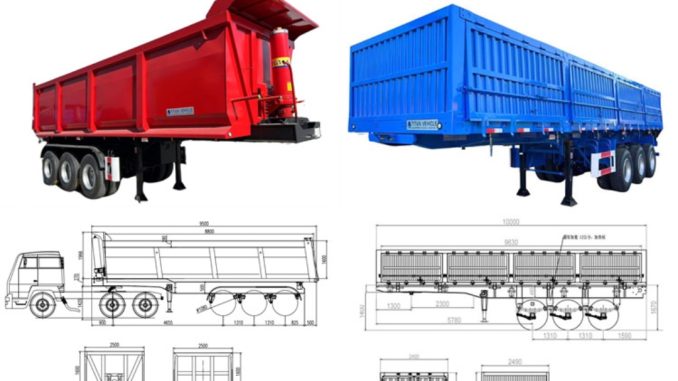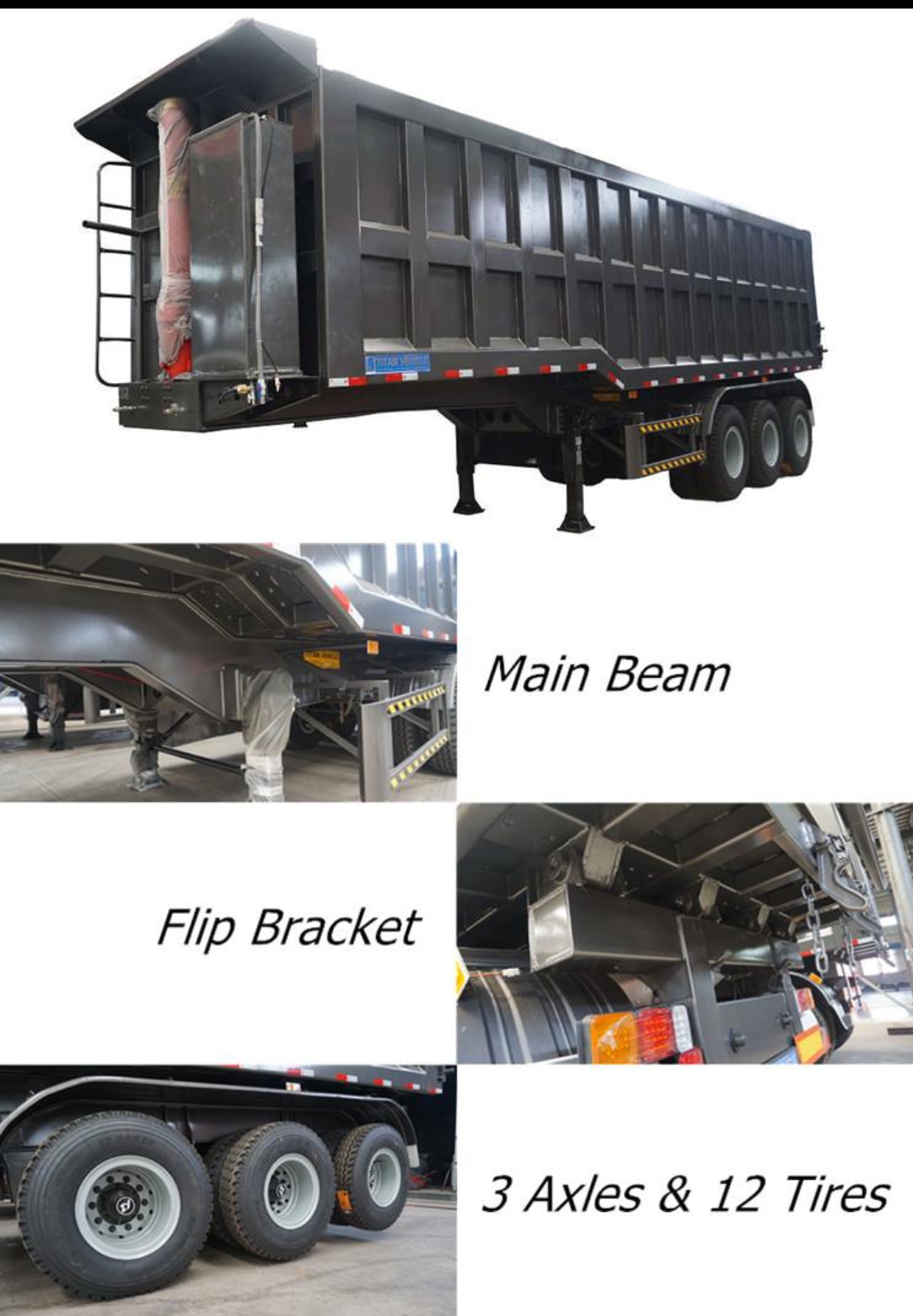
What is side tipper and end tipper trailer?
What is a side tipper?
A side tipper, also known as a side dump trailer, is a specific type of trailer designed for transporting bulk materials such as aggregates, grains, minerals, or construction materials. Unlike traditional rear dump trailers, a side tipper has the ability to unload its cargo by tipping the contents to the side, thus allowing for efficient and controlled discharge.
The main feature of a side tipper is its tipping mechanism, which is typically hydraulically operated. The trailer is designed with a hinged body that can be tilted to one side, allowing the cargo to slide out through the opened side. This tipping action enables the quick and precise unloading of materials, especially in situations where access or space might be limited.
Side tippers are commonly used in industries where rapid unloading and high discharge rates are required. They are particularly useful in construction sites, mining operations, quarrying, and agricultural settings where large volumes of bulk materials need to be transported and offloaded efficiently. The ability to discharge on the side also makes side tippers suitable for uneven terrain or situations where rear access might be difficult.
Many side tippers come equipped with additional features to enhance their performance and safety. These can include safety locks to prevent accidental tipping, tailgate release mechanisms for controlled unloading, and hydraulic systems that allow for adjustable tipping angles to accommodate various dumping conditions.
What is a tipper trailer?
A tipper trailer, also known as a dump trailer, is a specialized type of trailer designed for transporting and unloading loose or bulk materials. It is commonly used in construction, mining, and other industries where large quantities of material need to be moved and unloaded efficiently.
The primary feature of a tipper trailer is its ability to tilt or raise its cargo bed to unload the contents. This is achieved through a hydraulic or pneumatic system that raises the front end of the trailer, allowing the load to slide out from the rear of the trailer. The tipping action is usually controlled by the driver from inside the cab or remotely using a control panel.
Tipper trailers are constructed with a strong frame and a sturdy cargo bed made of steel or aluminum. The cargo bed is designed to handle heavy loads and withstand the forces exerted during the tipping process. These trailers come in various sizes and configurations to suit different hauling requirements.
The advantages of end tipper trailer include efficient and rapid unloading, as well as the ability to transport a wide range of materials including sand, gravel, soil, construction debris, agricultural products, and more. The tipping action allows for precise control over the discharge process, making it easier to unload in specific locations or onto conveyors or other equipment.
Overall, end tipper trailer offer a practical and versatile solution for hauling and unloading loose materials, providing convenience, efficiency, and versatility in various industries.

Advantages of side tipper and end tipper trailer
Side tipper and end tipper trailer are two different types of trailers used for transporting and unloading bulk materials. Each type has its own advantages.
Advantages of Side Tipper:
- Versatile Unloading: Side tipper allow for controlled and efficient unloading on the side, offering flexibility in discharging onto conveyor belts, stockpiles, or specific locations. This is especially useful in tight or restricted spaces where rear access may be limited.
- Faster Unloading: Side tipper typically have higher discharge rates compared to end tippers. The ability to unload along the side enables rapid and continuous unloading, saving time and increasing productivity.
- Reduced Risk of Spillage: Side tipper provide better control over the unloading process, minimizing the risk of material spillage during discharge. This is particularly advantageous when transporting fine or dusty materials that may pose environmental or safety concerns.
- Improved Stability: Side tipper often have a lower center of gravity due to their design, which enhances stability during transportation. This can be advantageous when maneuvering on uneven terrain or during turns.
Advantages of End Tipper Trailer:
- Simpler Design: End tipper trailer typically have a simpler and more straightforward design compared to side tippers. This simplicity translates to easier maintenance and potentially lower maintenance costs.
- Larger Load Capacity: End tipper trailer often have larger load capacities compared to side tippers of similar size. This allows for hauling a greater volume of material in a single trip.
- Easy Loading: End tipper trailer generally offer easier and more efficient loading capabilities. The rear dumping action allows for straightforward direct loading, either through tipping the trailer or by using a loader or conveyor.
- Stability on Steep Terrain: End tipper trailers are often preferred on steep inclines or uneven terrain due to their ability to distribute the weight of the load evenly along the axles, providing better traction and stability.
It’s important to note that the choice between a side tipper and an end tipper depends on specific requirements, the type of material being transported, and the operational conditions. Both types of trailers offer their unique advantages and are designed to suit different applications.
Difference between side tipper and end tipper trailer
A side tipper is a type of trailer that has a tipping mechanism located on either side of the trailer. This allows the trailer to be unloaded by tipping it to one side, usually using hydraulic cylinders. Side tippers are commonly used for transporting bulk goods such as grains, coal, or construction materials.
On the other hand, an end tipper trailer is a type of trailer that has a tipping mechanism located at the rear end of the trailer. This allows the trailer to be unloaded by tipping it backwards. End tipper trailers are commonly used for transporting loose materials such as gravel, sand, or debris.
The main difference between side tippers and end tippers is the location of the tipping mechanism. Side tipper tilt to the side for unloading, while end tippers tilt backwards. Additionally, the types of materials typically transported by each type of trailer may vary. Side tippers are more commonly used for bulk goods, while end tippers are more commonly used for loose materials.

Leave a Reply